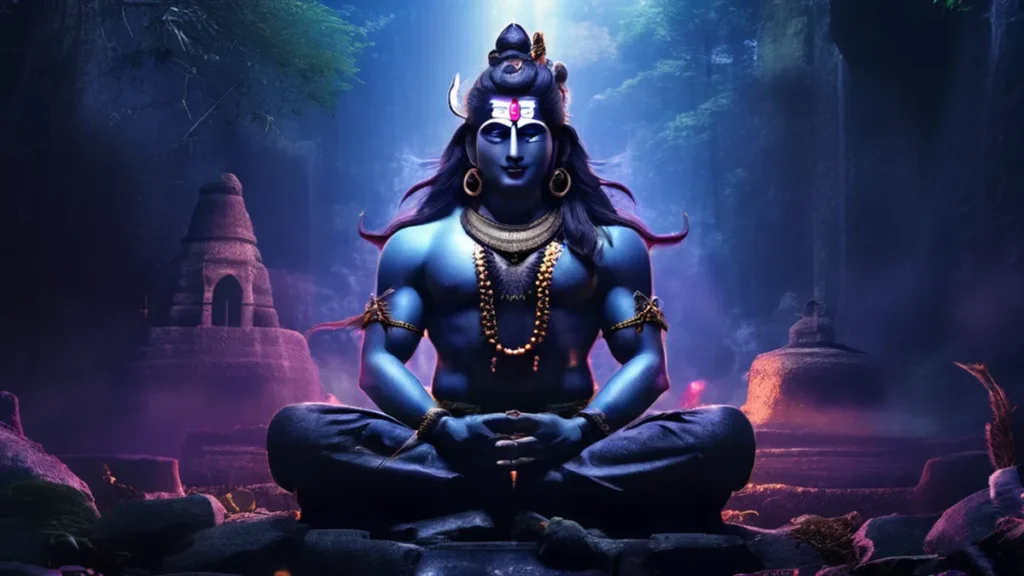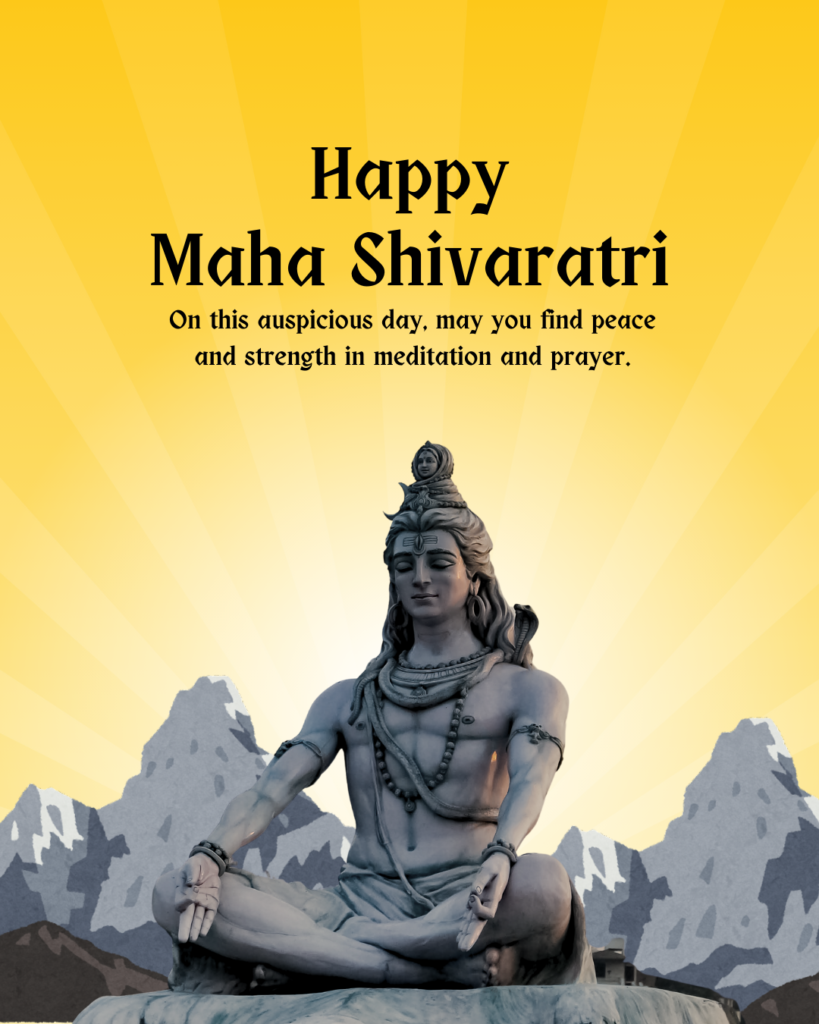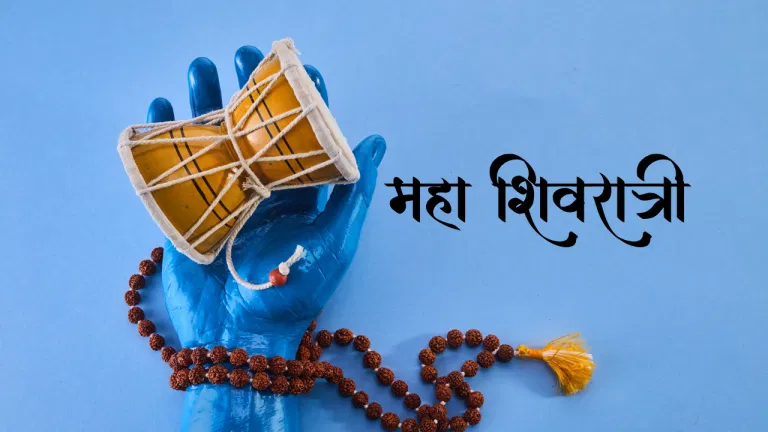Maha Shivratri, one of the most significant Hindu festivals, is dedicated to Lord Shiva, the Supreme Being who represents transformation and destruction. The festival is observed with great devotion and enthusiasm across India and in many parts of the world. In 2025, Maha Shivratri falls on February 26. This auspicious night is believed to be a time of cosmic alignment when spiritual energies are at their peak, making it the perfect occasion for devotion, meditation, and self-reflection.
Significance of Maha Shivratri
Maha Shivratri, which translates to “The Great Night of Shiva,” holds deep spiritual and mythological importance. Unlike other Hindu festivals that celebrate joy and prosperity, Maha Shivratri is about self-discipline, introspection, and union with the divine. It is believed that observing this night with sincerity and devotion can cleanse one’s karma, bestow divine blessings, and lead to spiritual enlightenment.
Spiritual Importance
- Auspicious Alignment: The planetary positions on Maha Shivratri are said to create a powerful energy field that enhances meditation and spiritual awakening.
- Awakening of Consciousness: Devotees observe fasts and chant mantras to elevate their consciousness and connect with Lord Shiva.
- Destruction of Negativity: Shiva, as the destroyer, symbolizes the removal of ignorance and the triumph of wisdom.
1. Representation of Lord Shiva
Images of Maha Shivratri often depict Lord Shiva in various forms, including:
- Meditating Shiva – Represents peace, stillness, and the power of self-realization.
- Nataraja (Cosmic Dancer) – Symbolizes creation, preservation, and destruction.
- Lingam (Shivling) – Represents Shiva’s formless nature and cosmic energy.
- Shiva with Parvati and Nandi – Shows his role as a loving husband and protector.
2. Symbolism of Devotion
Images of devotees performing Abhishekam (ritual bathing) of the Shiva Lingam with milk, water, honey, and other sacred offerings reflect the purification of the soul and surrender to the divine.
3. Cosmic Energy & Power
Depictions of Shiva with Trishul (trident), Damru (drum), and Snake emphasize his power over time, rhythm, and destruction of evil.
4. Spiritual Awakening & Meditation
Maha Shivratri is considered the Night of Awakening, and images of Shiva in meditation inspire devotees to focus on inner consciousness and enlightenment.
5. Festive & Cultural Depictions
Colorful paintings, digital art, and rangoli designs of Shiva are used in temples, homes, and social media to spread the essence of the festival.

Legends Associated with Maha Shivratri
1. The Divine Marriage of Shiva and Parvati
One of the most popular legends associated with Maha Shivratri is the wedding of Lord Shiva and Goddess Parvati. It is believed that on this night, Shiva married Parvati, signifying the union of masculine and feminine energies. This divine marriage represents balance, harmony, and the perfect cosmic equilibrium.
2. The Churning of the Ocean (Samudra Manthan)
During the great churning of the ocean by gods and demons, a deadly poison called Halahala emerged, threatening to destroy all creation. Lord Shiva, out of compassion, drank the poison and held it in his throat, which turned blue, earning him the name Neelkanth (the blue-throated one). Maha Shivratri commemorates Shiva’s sacrifice for the well-being of the universe.
3. The Night of Shiva’s Dance (Tandava)
According to some scriptures, Maha Shivratri is the night when Lord Shiva performed the Tandava, the cosmic dance of creation, preservation, and destruction. This dance symbolizes the rhythmic cycle of the universe and reminds devotees of the impermanence of life.

Rituals and Observances of Maha Shivratri
1. Fasting (Vrat)
Fasting is a crucial part of Maha Shivratri. Devotees observe different types of fasts:
- Nirjala Vrat (complete fast without food and water)
- Phalahar Vrat (consumption of fruits and milk)
- Partial fasting (simple vegetarian meals)
2. Worshiping the Shiva Lingam
Devotees visit temples and perform Abhishekam (ritual bathing) of the Shiva Lingam with various offerings:
- Milk – symbolizes purity and piety
- Honey – represents sweet devotion
- Yogurt – denotes prosperity
- Ghee – signifies victory over negativity
- Bel Patra (Bilva leaves) – considered sacred for Shiva worship
3. Chanting and Meditation
Chanting the Maha Mrityunjaya Mantra and Om Namah Shivaya brings inner peace and spiritual upliftment. Many devotees meditate throughout the night to seek divine blessings.
4. Night Vigil (Jagran)
Maha Shivratri is observed as an all-night festival. Devotees stay awake, engaging in bhajans (devotional songs), reciting scriptures, and performing prayers. It is believed that staying awake symbolizes victory over darkness and ignorance.
5. Temple Visits and Processions
Shiva temples witness grand celebrations, with large processions, special pujas, and spiritual discourses. Prominent temples such as Kashi Vishwanath (Varanasi), Somnath (Gujarat), Kedarnath (Uttarakhand), and Pashupatinath (Nepal) see thousands of devotees gathering to pay homage to Lord Shiva.
How Maha Shivratri is Celebrated Across India
1. Varanasi – The City of Shiva
In Varanasi, the holiest city for Shiva devotees, Maha Shivratri is celebrated with grandeur. The ghats of the Ganges witness thousands of people taking holy dips, performing pujas, and participating in spiritual gatherings.
2. Ujjain – Mahakaleshwar Jyotirlinga
Ujjain, home to the famous Mahakaleshwar temple, hosts grand processions of Lord Shiva’s idol, where devotees chant “Har Har Mahadev” with immense enthusiasm.
3. Tamil Nadu – Thiruvannamalai Temple
The Thiruvannamalai temple in Tamil Nadu holds a special Girivalam (circumambulation of Arunachala Hill) and a spectacular Maha Deepam (sacred fire) that attracts thousands of devotees.
4. Nepal – Pashupatinath Temple
In Nepal, the Pashupatinath temple sees a massive gathering of devotees, including sadhus, who perform deep meditative practices and elaborate pujas in honor of Shiva.
Maha Shivratri and Its Relevance in Modern Times
Maha Shivratri is not just a religious festival; it holds profound relevance in today’s world. The values associated with the festival—detachment, self-discipline, devotion, and inner transformation—are crucial for navigating modern-day challenges. Observing Maha Shivratri teaches us to overcome negativity, cultivate mindfulness, and embrace a higher consciousness.
Key Takeaways
- Maha Shivratri is a night of spiritual awakening and devotion to Lord Shiva.
- The festival is linked to multiple legends, including Shiva’s divine marriage, the churning of the ocean, and the cosmic dance.
- Fasting, meditation, chanting, and temple visits are integral rituals of Maha Shivratri.
- The festival is celebrated with grandeur across India, especially in temples dedicated to Lord Shiva.
- In today’s fast-paced world, Maha Shivratri serves as a reminder of the importance of self-discipline, wisdom, and spiritual connection.
Conclusion
Maha Shivratri 2025 is a perfect occasion to seek divine grace, reflect on one’s spiritual journey, and embrace the transformative power of Lord Shiva. Whether through fasting, meditation, temple visits, or chanting Shiva’s name, devotees can experience deep inner peace and spiritual fulfillment on this sacred night. As we prepare to celebrate this divine festival on February 26, 2025, let us remember the essence of Shiva—the eternal, the infinite, and the ever-compassionate destroyer of ignorance.



